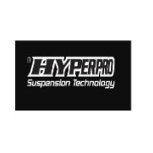-
Welcome to Auto Parts Forum
Whether you are a veteran automotive parts guru or just someone looking for some quick auto parts advice, register today and start a new topic in our forum. Registration is free and you can even sign up with social network platforms such as Facebook, X, and LinkedIn.
Australia Bike Steering Dampers
-
Similar Topics
-
By Dorman Products
The easy fix for Ram trucks with electronic power steering problems | Dorman 601-903
-
-
By Counterman
Plews & Edelmann will showcase its Edelmann Electric Power Steering (EPS) repair program through live demonstrations at the Automotive Aftermarket Products Expo (AAPEX), Nov. 5–7 in Las Vegas, at the Live Product Demo Area, Level 1 – Booth J8233. The company said the demonstrations will feature a complete belt replacement on an EPS rack and pinion unit using the Edelmann drive belt replacement kits and proprietary chamfer ring removal tools. Each 40-minute demonstration will highlight how shops can save over 50% compared to full rack replacement costs while eliminating the need for specialized equipment, the company added.
“We are excited to demonstrate how our EPS repair solutions are transforming the automotive aftermarket,” said Dennis Mullen, ASE-certified automobile technician and parts specialist and regional sales manager at
link hidden, please login to view. “These demonstrations will show service repair professionals firsthand how they can offer cost-effective EPS repairs without the need for expensive programming or alignment, especially crucial now when replacement racks are increasingly scarce or unavailable.” Demonstration Schedule:
Tuesday, Nov. 5: 11 a.m., 12 p.m., and 3 p.m. Wednesday, Nov. 6: 11 a.m., 12 p.m., and 3 p.m. Thursday, Nov. 7: 11 a.m., 12 p.m., and 3 p.m. To add additional value to the demonstrations,
link hidden, please login to view said it will give away one Chamfer Ring Spanner Wrench kit each day of the show to lucky attendees who have their badges scanned at the demo booth. After viewing the demonstrations, the company encourages attendees to visit the main Plews & Edelmann booth (A4245) to learn more about the complete EPS repair program, including belt replacement kits, couplings and specialized tools, as well as discuss distribution opportunities.
“This comprehensive EPS repair program represents a significant advancement in steering system repair,” added Mullen. “We’re providing the automotive aftermarket with solutions that make previously unavailable repairs both accessible and profitable.”
The post
link hidden, please login to view appeared first on link hidden, please login to view.
link hidden, please login to view





Recommended Posts
Join the conversation
You can post now and register later. If you have an account, sign in now to post with your account.
Note: Your post will require moderator approval before it will be visible.